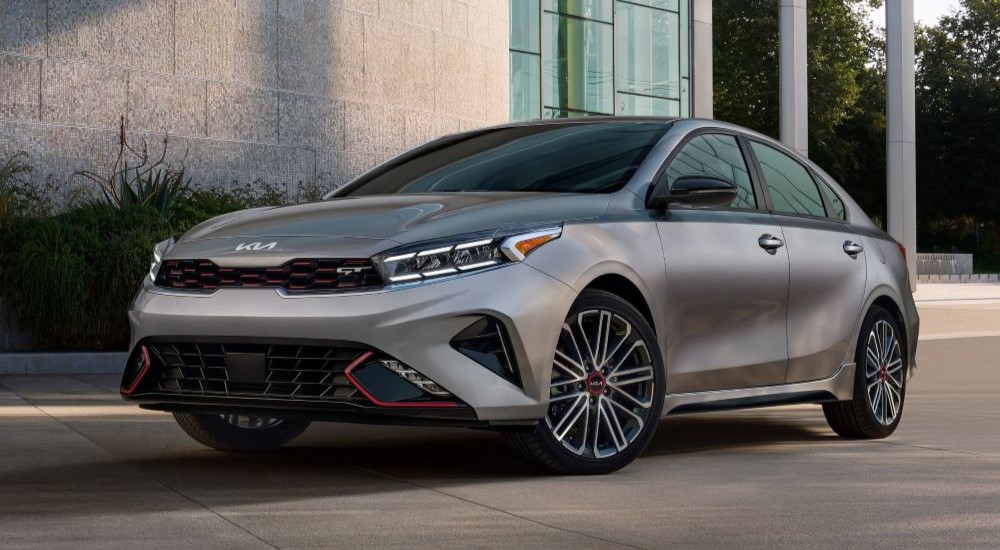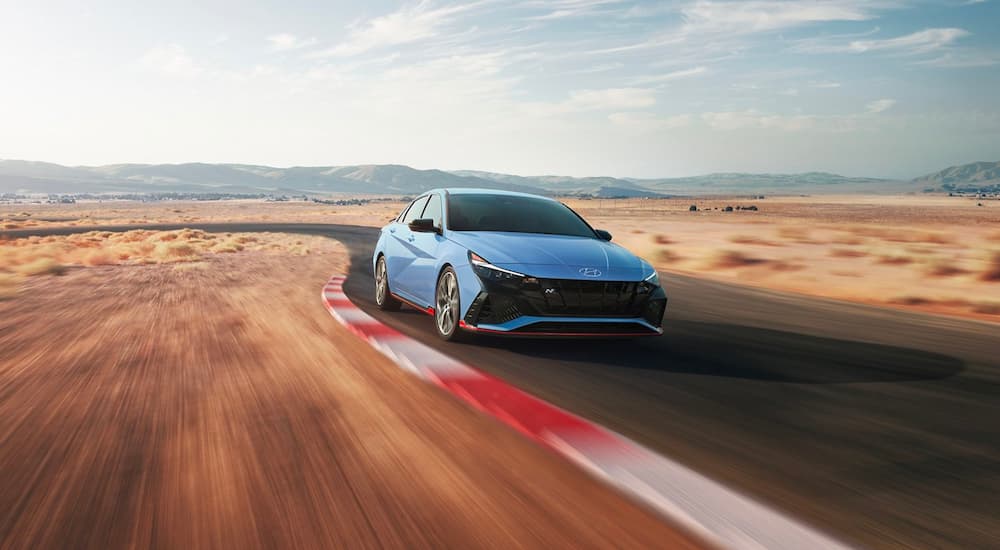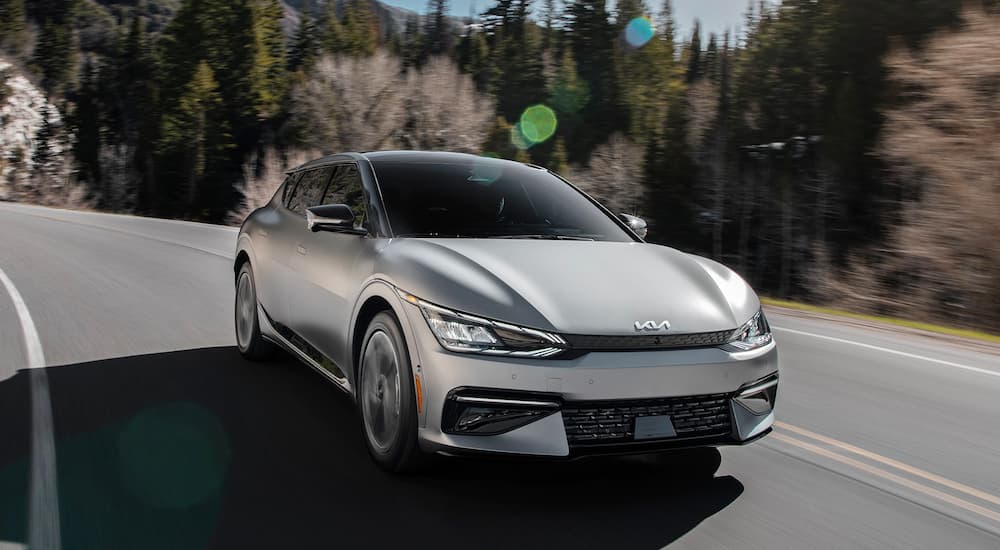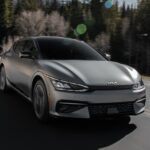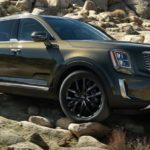Both Kia and Hyundai are Korean automobile companies that have made their stamp on the automotive world by providing quality, fuel-efficient vehicles at very reasonable prices. Over the past couple of decades, both brands have made steady progress infiltrating areas of the market they previously weren’t known for, from trucks to luxury vehicles to sports cars, and you’re likely to see a Hyundai or Kia dealership in nearly every town. Yet both brands have their own unique flavors, which is why it can be fun to compare competing cars from Kia and Hyundai.
Kia and Hyundai are connected when you climb up the corporate ladder far enough as each company has a large minority share in the other. It’s a mistake, though, to assume that means they are interchangeable. Each company has its own quirks and its own advantages. Some buyers find it hard to decide which brand they should check out when it comes time to purchase a new ride.
A Shared History
Kia started as a company in 1944 (and originally developed bicycles!) in Korea but did not dive into the automotive market until the late ‘50s when they switched to motorcycles. Hyundai as a brand was founded in the late ‘40s and, like Kia, did not initially focus on automobiles, not crafting one until it founded the Hyundai Motor Company in 1967. Both companies initially grew out of the need for infrastructure as the world rapidly developed post-World War II. Then, they evolved to meet a need for transportation: automobiles. The labor force worldwide was wildly transformed by the mass marketing of cars and trucks. Kia and Hyundai jumped on this trend, selling cars in Korea and then worldwide. It took time for them to catch on in North America thanks to American brands like Ford, but now, both Kia and Hyundai are well-respected options that drivers around the globe flock to thanks to their attributes.
Different Goals
While both branched out of Korea, it would be a mistake to assume they were making similar products. We might have preferences of our own, but a head-to-head match-up is not necessarily easy since the brands are appealing to different customers.
There’s plenty of crossover in terms of purpose (interestingly, the average age of a buyer for both Kia and Hyundai is around the same: late 30s), but Kia aims for a sportier look to their automobiles, whether they’re a sedan or SUV, while Hyundai has a slightly bulkier, traditional look to their offerings. The sleeker structure of Kias might be why that brand often has a slight edge over Hyundais in a similar class when it comes to fuel efficiency. Neither company will break the bank at the pump, but Kia usually grants you a couple of extra miles per gallon.
To call Hyundai’s design conservative might be slightly unfair, but Hyundai definitely values tradition over Kia’s more athletic, contemporary vibe. For a sportier, fashionable ride, consumers will go to Kia. For a more traditional car in both exterior and interior appearance, Hyundai’s vehicles are the one to go for.
Models Competing
To make things fun, it might be illuminating to compare models in the same class. In some cases, they are direct competitors, but in other cases, they’re aiming for different purposes even while technically being in the same category.
The Kia Forte is a fun, sporty car with an austere interior that gives it the vibe of a young person’s car. It’s a quiet ride, too, so cruising down the highway is always enjoyable. The Hyundai Elantra recently received an upgrade to its front end, and it now has a sleeker look and feels like it’s heading into the future. Its curved dashboard and big touchscreen add both class and cool.
In terms of performance, the Forte and Elantra couldn’t be more different. The 2024 Elantra gets between 139 and 276 horsepower, depending on the build. The 2024 Kia Forte offers drivers the choice of two engines with a maximum horsepower of 201. In terms of efficiency, you’ll find that the traditional gas-powered models are similarly matched, but the Elantra has offered hybrid variants.
Kia shows a bit more diversity in the subcompact SUV department as it offers three options as opposed to Hyundai’s two options. That alone probably makes Kia a little bit more desirable, but both manufacturers are able to offer competitive pricing and spacious interiors; plus, Kia and Hyundai have EV options for SUV drivers. However, Kia has a stand-out option in terms of exterior design: the Kia Soul. Its boxy structure makes it both a throwback and a gem on the road.
For larger SUVs, each brand offers two. Kia has the Sorento and Telluride, while Hyundai has the Santa Fe and Palisade. Similar to the Soul, Kia’s Telluride takes some aesthetic risks with a boxier front and both memorable and original front grille design. That’s not to knock Hyundai’s options, which once more gravitate towards the traditional approach. Both models have comparable features, cargo space, and performance. The 2024 models both have a 3.8L V6 under the hood that produces 291 hp and 262 lb-ft of torque. The big difference will be in towing, as the Telluride is rated to tow 5,500 lbs, whereas the Palisade is rated to tow 5,000 lbs.
An Electric Future
Kia and Hyundai have not only spoken about electric vehicles, they’ve delivered them, too. Both manufacturers want to be at the forefront of the electric revolution and have put electric vehicles on the market. In fact, for the 2024 models, both brands are prominently advertising their hybrid and EV sedans and SUVs, placing a big bet on the future being electric.
It’s early days in the electric vehicle industry, and we’re sure to see plenty of evolution year to year, but in terms of look, and that’s often what the difference between Kia and Hyundai comes down to, it’s hard to beat out the Kia EV6, that’s performance trim can get up to 576 horsepower. The EV6’s futuristic vibe meshes just perfectly with the fact that it’s embracing the automotive wave of the future. On the flip side, Hyundai also offers an all-electric compact SUV, the IONIQ 5. This model has four trims, a performance variant, and can even tow 2,300 lbs like the EV6. Kia also offers the EV9, an all-electric three-row SUV. Hyundai has yet to produce a competitor for this model.
Kia and Hyundai have long built a reputation for fuel efficiency, so it makes sense that they’d both take it to the next level with EVs. They’re uniquely positioned to succeed as infrastructure across North America pivots to EV-friendly driving. We expect both manufacturers to see great success thanks to their forward thinking.
Which to Buy?
There’s a solid argument to be made that there’s no real winner. The brands aim for different aesthetics, so for many consumers, it will simply come down to which type of sedan or SUV they like better. Both brands are so deeply tied together that you will find they even share features or design elements. One thing is for sure, though: you will find a great option when you shop from these two competing brands.
